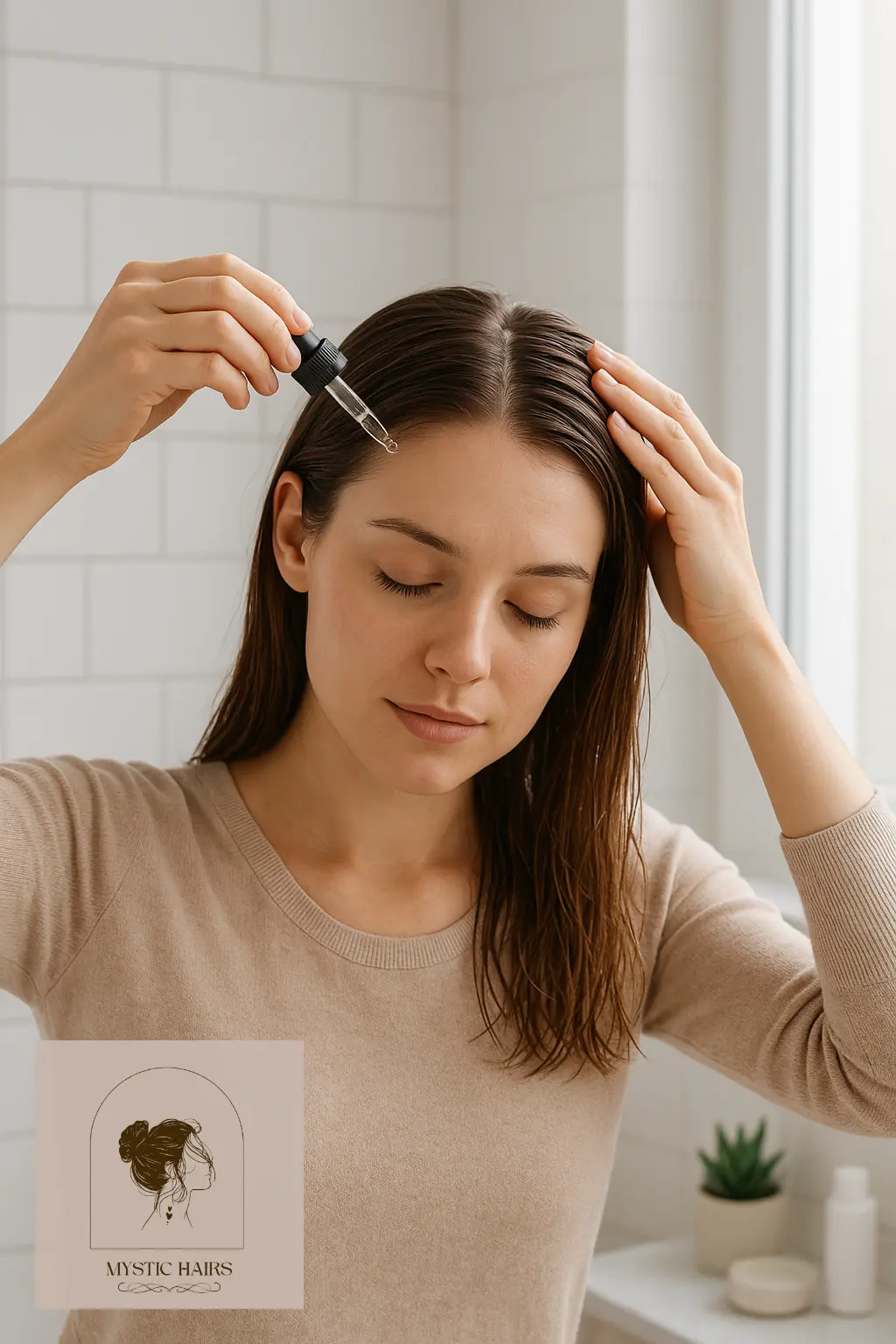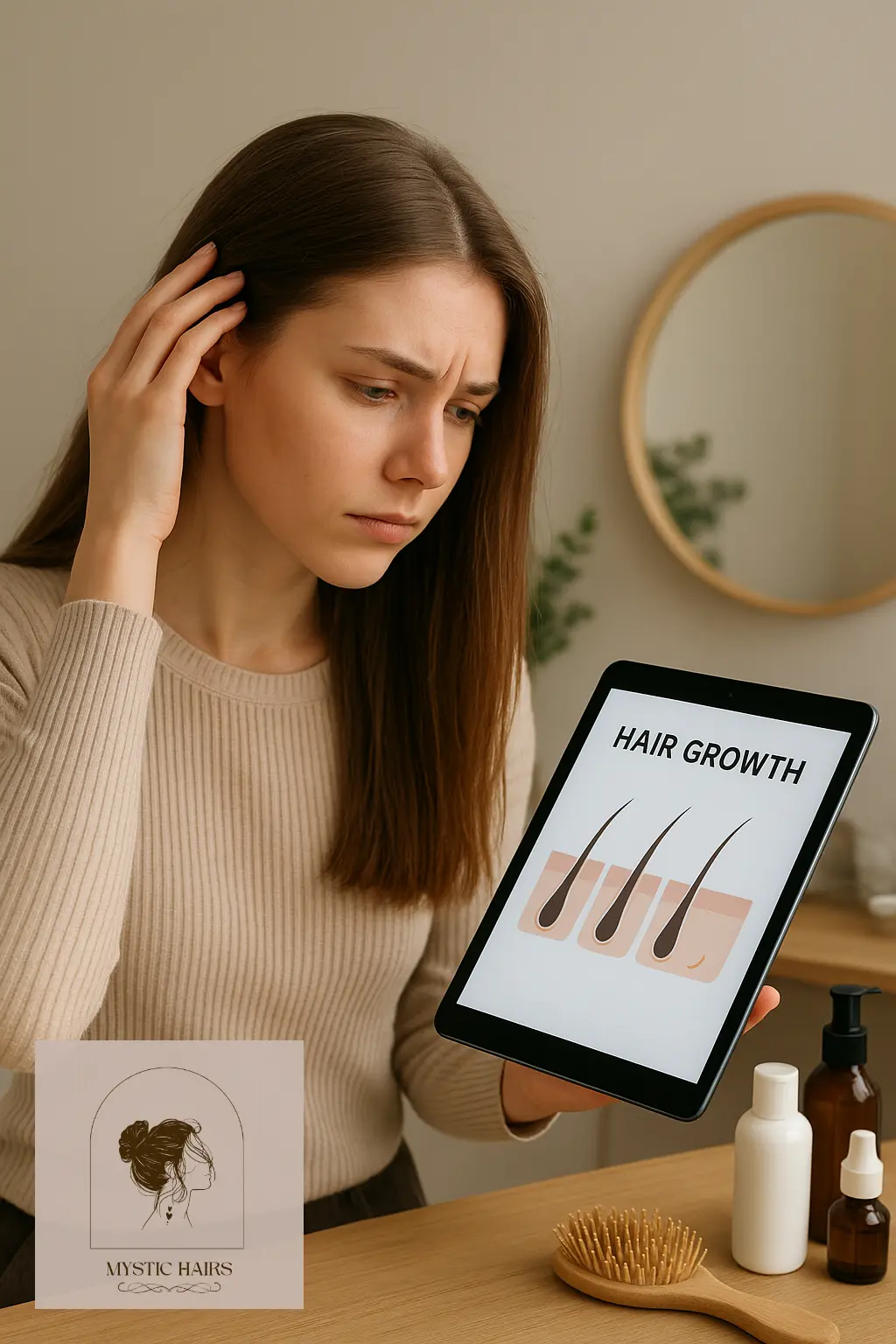How to Grow Out Uneven Hair: 10 Smart Ways to Get Balanced, Healthy Strands
How to grow out uneven hair is a common concern for many people dealing with breakage, heat damage, or awkward cuts. Uneven strands can make your hair look messy and hard to style, but with the right care and consistency, you can guide your locks toward healthier, even growth.
The process isn’t about a quick fix—it’s about adopting smart habits that strengthen your strands, nourish your scalp, and encourage balance. From proper trimming routines to dietary improvements, there are practical steps you can take to restore uniformity.
How to Grow Out Uneven Hair
In this guide, we’ll cover 10 expert-backed strategies to help you manage and grow out uneven hair while keeping your strands strong, smooth, and full of life.
1. Assess Why Your Hair Is Uneven
Before learning how to grow out uneven hair, it’s essential to identify why the problem exists in the first place. Causes can range from frequent heat styling and chemical treatments to breakage from tight hairstyles or nutritional deficiencies. In some cases, a poorly executed haircut may also lead to uneven lengths. By understanding the root cause, you’ll know whether your solution should focus on scalp health, trimming, or strengthening treatments.
Once you pinpoint the issue, you can create a targeted plan for recovery. For example, if uneven hair comes from heat damage, reducing heat exposure and adding nourishing masks should be your priority. If the problem is split ends, regular trims become essential. Recognizing what’s behind the unevenness helps you stop further damage while promoting healthier growth for the future.

2. Trim Strategically and Consistently
One of the most effective ways to manage how to grow out uneven hair is by trimming strategically. While it may feel counterintuitive to cut your hair while trying to grow it out, trimming prevents split ends from traveling up the hair shaft and causing further unevenness. Scheduling trims every 8–12 weeks can help maintain shape and prevent damage from spreading.
Instead of asking your stylist for a major chop, request a “dusting” trim—a technique where only the very tips of the hair are cut off. This allows your shorter sections to catch up with the longer ones, leading to a more even overall length over time. Consistent, minimal trims keep your hair healthy while letting it grow stronger and fuller.

3. Nourish Your Scalp for Balanced Growth
Healthy hair starts at the roots, which is why scalp care is key when learning how to grow out uneven hair. A neglected scalp can lead to clogged follicles, dandruff, or poor circulation, all of which contribute to uneven growth. Incorporating scalp massages with natural oils like rosemary or peppermint can stimulate blood flow and encourage stronger, healthier strands.
Using a gentle exfoliating scrub once or twice a month can also help remove product buildup and dead skin cells, allowing your follicles to breathe. Pair this with a nourishing shampoo and conditioner free of sulfates to avoid stripping away natural oils. A well-nourished scalp lays the foundation for hair that grows evenly and thrives long-term.

4. Protect Your Hair From Daily Damage
If you want to succeed at how to grow out uneven hair, protecting your strands from everyday damage is essential. Friction from rough pillowcases, tight hairstyles, and excessive brushing can all contribute to breakage and uneven growth. Switching to a silk or satin pillowcase minimizes friction, while using scrunchies or loose braids at night helps reduce tension.
Heat styling is another major culprit. Limiting blow dryers, curling irons, and flat irons gives your hair a chance to recover. When you must use heat, always apply a high-quality heat protectant. Small daily adjustments in how you handle your hair can make a huge difference in maintaining even growth and preventing future unevenness.

Uneven growth often makes bangs look separated or hard to manage. Learning how to keep bangs from splitting gives you styling tricks to keep your fringe neat while your hair grows out.
5. Focus on a Balanced Diet for Stronger Strands
Your diet plays a direct role in how to grow out uneven hair naturally. Hair needs nutrients like biotin, vitamin D, zinc, and protein to grow strong and healthy. Without these, you may experience thinning or patchy growth. Incorporating foods like eggs, salmon, leafy greens, and nuts can supply essential vitamins and minerals that encourage balanced hair growth.
If your diet lacks variety, consider a supplement specifically formulated for hair health. Collagen powders, biotin tablets, or omega-3 capsules can provide an extra boost. However, always consult with a doctor before starting supplements. Nourishing your body from the inside ensures that your hair has the building blocks it needs to grow evenly and beautifully.

6. Use Targeted Hair Treatments
Specialized treatments can play a big role in how to grow out uneven hair. Deep conditioning masks, leave-in conditioners, and protein treatments strengthen fragile strands, preventing breakage that leads to unevenness. Products infused with keratin, argan oil, or castor oil are especially beneficial for repairing and reinforcing hair.
If your uneven growth stems from scalp issues, opt for treatments that soothe and stimulate the scalp. Tea tree oil, aloe vera masks, and scalp serums help promote circulation and maintain a healthy environment for growth. Regularly using targeted treatments ensures that your strands remain resilient and your scalp stays balanced, both of which are essential for evening out your hair.

7. Be Patient and Consistent
One of the most overlooked aspects of how to grow out uneven hair is patience. Hair typically grows about half an inch per month, which means visible changes take time. It’s easy to get frustrated during the growing-out phase, but staying consistent with your routine pays off. Avoid drastic shortcuts or quick-fix products that promise overnight results.
Instead, commit to a long-term plan that includes trims, treatments, and protective styling. Take progress photos every few months to see the improvement. Even when it feels slow, your efforts are gradually leading to healthier, more balanced hair. Patience, paired with consistency, ensures that you’ll eventually achieve the even, strong locks you’re aiming for.

If uneven growth was caused by chemical damage, irritation may also be an issue. Understanding itchy scalp after hair coloring helps you manage sensitivity while encouraging healthier regrowth.
8. Understand the Causes of Uneven Hair Growth
To fully master how to grow out uneven hair, it helps to understand what causes it. Genetics, hormonal imbalances, stress, or even how you sleep at night can all contribute to uneven strands. For example, if you always sleep on one side, you may notice that hair grows thinner or breaks more on that side.
By identifying these triggers, you can make conscious changes to prevent further unevenness. Managing stress, adjusting sleeping positions, or visiting a dermatologist for hormonal guidance can help address the underlying issues. A proactive approach to understanding causes ensures you’re not only fixing the problem but also preventing it from recurring.

9. Style Uneven Hair While Growing It Out
Knowing how to grow out uneven hair doesn’t mean you have to sacrifice style. While your strands catch up, you can use clever styling tricks to camouflage unevenness. Loose waves, layered cuts, and side parts can make mismatched lengths less noticeable. Hair accessories like headbands or clips are also great for disguising shorter sections.
For professional settings, sleek ponytails or buns can create a polished look while keeping your uneven lengths hidden. Styling is about working with what you have while waiting for your hair to grow. These strategies not only boost confidence but also reduce the temptation to chop off everything and start over.

10. Stick to a Healthy Haircare Routine
Consistency is the key to mastering how to grow out uneven hair successfully. A routine that includes gentle cleansing, weekly deep conditioning, scalp massages, and regular trims ensures your hair grows evenly and healthily. Using wide-tooth combs instead of harsh brushes and limiting chemical treatments also helps protect fragile strands.
Think of your haircare routine as self-care. The more consistently you follow it, the more your hair will reward you with strength, shine, and balance. Over time, this steady approach ensures your uneven strands gradually blend into an even, beautiful mane.

Breakage around the crown is a common reason hair grows out unevenly. Discovering how to stop hair breakage at the crown ensures new growth remains strong and blends smoothly as your hair evens out.
Bonus Tips for Faster, Even Hair Growth
- Switch to microfiber towels to minimize breakage after washing.
- Avoid chemical relaxers or harsh dyes during the growing phase.
- Keep hair hydrated with leave-in conditioners and lightweight oils.
- Reduce stress with yoga or meditation, as stress can trigger hair shedding.
- Drink plenty of water daily to support hydration and healthy follicles.
FAQs About Growing Out Uneven Hair
Q1: How long does it take to fix uneven hair naturally?
On average, hair grows about half an inch per month, so noticeable improvements can take 6–12 months depending on the severity of unevenness.
Q2: Can uneven hair be fixed without cutting it?
While trims are ideal, you can minimize cuts by focusing on protective styling, deep treatments, and scalp care to let shorter strands catch up.
Q3: Does stress cause uneven hair growth?
Yes, stress can disrupt the hair growth cycle, leading to patchy or uneven growth. Managing stress supports healthier, more balanced hair.
Q4: Are supplements necessary for growing out uneven hair?
Not always, but they can help if your diet lacks key nutrients like biotin, vitamin D, or omega-3s. Always check with a doctor before starting supplements.
Q5: Can I color my hair while trying to grow it out evenly?
It’s best to avoid harsh dyes and bleaching, as they can worsen breakage and uneven growth. If coloring is necessary, opt for ammonia-free or semi-permanent dyes.
Conclusion
Learning how to grow out uneven hair requires patience, dedication, and the right strategy. By trimming strategically, nourishing your scalp, focusing on nutrition, and protecting your strands from daily damage, you can guide your hair toward balanced growth. Styling tricks and consistent care routines help you feel confident while waiting for your strands to even out.
With persistence, healthy habits, and smart choices, uneven hair can transform into strong, smooth, and beautifully even locks.

Aria Blake is a beauty writer and hairstyle curator passionate about empowering women through timeless trends and modern haircare. With a deep love for natural textures and creative styling, Aria blends expert tips with real-life inspiration to help you look and feel your best—every single day. When she’s not writing for MysticHairs.com, you’ll find her exploring protective styles, sipping herbal tea, or pinning dreamy looks for your next hair glow-up.






